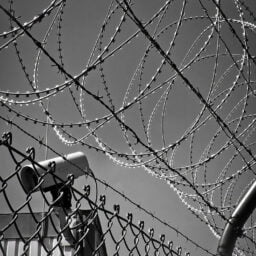INTRODUCTION
According to National Crime Records Bureau’s Report, 4,05,861 cases were registered of crime against women which is an increase of 7.3% in 2019 over 2018 and among which the majority of the crime was of cruelty on woman by her husband or his relatives which were reported under section 498A of IPC. The history of crime against women is clearly evident that it will take a long time to prevent the malady of crime against women in India. To cure this problem legislature inserted Section 498A of the Indian Penal Code,1860, and the Protection of Women from Domestic Violence Act,2005, in an attempt to safeguard women from violence.
Section 498A which is there to protect the woman from being subject to cruelty by her husband or his relatives was introduced in the year 1983. Our society has some stigma attached while marrying a daughter to give dowry and this practice has been practised by our society for a very long period of time which led to a rise in crime. However, there are instances where the allegations made on the husband or his relatives were false by taking the advantage of this section. The misuse has outraged since then. Similarly, there are certain instances also where there is a misuse of certain provisions of the Scheduled castes and scheduled tribes (prevention of atrocities) Act. This act was introduced to remove the discrimination faced by these two communities and are denied their civil rights but sometimes it was used to settle personal scores.
JUDGEMENTS ALTERED BY SUPREME COURT
Supreme Court while realizing the misuse of section 498A issued certain guidelines in RAJESH SHARMA V. STATE OF UTTAR PRADESH including the formation of district family welfare committees, no arrest will be made till the complaint was examined by the committee, in case of settlement between the parties the disposal of proceedings will be made by a senior judicial officer, etc. However, in SOCIAL ACTION FORUM FOR MANAV ADHIKAR v. UOI, the Supreme Court modified the same judgment, stating that most of the directions enter into the field of the legislature, which was not permissible. It was held that the formation of the family welfare committee was contrary to the procedure prescribed under CRPC.
Similarly, the supreme court in taking cognizance of the abuse of the process of the courts with regard to the SCs & STs Act, issued certain guidelines in SUBHASH KASHINATH MAHAJAN v. STATE OF MAHARASHTRA, including to hold preliminary inquiry mandatorily to avoid false implication of an innocent individual, before the arrest of a public servant approval of an appointing authority, etc.
But in one of the judgments of supreme court UOI v. STATE OF MAHARASHTRA AND ORS., it was held that the guidelines stated in supra judgment are contrary to protective discrimination given to members of SC and ST communities as stated under the constitution. And said that lodging of false reports is due to humans failing not because of caste factor.
The onus is on the police to make ensure that no undue advantage is taken of law by anybody. The investigating officer must do some kind of investigation before jumping to the conclusion as soon as FIR is registered to find out the genuineness of a complaint before an arrest takes place. It is a settled law that no arrest can be made on a mere allegation. The arrest must be necessary and justified. One of the judgments of the Supreme Court i.e., ARNESH KUMAR v. STATE OF BIHAR, asked the police officer to satisfy themselves as per the parameters of arrest given under Section 41 of CRPC.
RATIO OF FALSE CASES VERSUS GENUINE ONE
According to the recent data compiled by the National Crime Records Bureau Report, the percentage of false cases registered under section 498A is 5%. And nearly 17,765 cases were decided under this section by the court out of which 3,425 cases ended up with a conviction. Similarly, around 12% of the cases under the SCs and STs (prevention of atrocities) Act were found to be not true by the police. And nearly 3,588 ended up with a conviction out of the 8,138 cases. The problem which arises before the court is when it concludes that a case is not true/false. And many innocent individuals languish in jail because of no reason and which makes them more vulnerable to resume their life back on track difficult.
REMEDIAL MEASURES AGAINST FALSE REPORT
- The first measureis to start criminal action against the person who gives false information to the police. After completing the investigation, the police may start the action under section 182 or 211 of IPC. Both the offences are non – cognizable and to initiate a legal action nod of the magistrate is necessary.
- The second measureis that a complaint can be made to a magistrate who after an inquiry will take appropriate action against a person who filed a false case with the police.
- The third measureis that the complainant can approach High Court for anticipatory bail and for quashing the FIR as High Court is having the inherent powers under Section 482 of CRPC.
- The fourth measureis that the complainant may claim the damages under the Law of Tort for malicious prosecution.
CONCLUSION
The onus always lies on the truth of a case and to arrive at that the investigating officer’s investigation matters a lot as it is their duty to investigate the case thoroughly and fearlessly. As the complaint on the pretext of falsehood leads to rope the life of many innocent individuals, they become vulnerable in rest of their life, they have to go from the mental trauma which intact them to remain silent and alone because of the false criminal cases, so the duty of the police officer is to ensure cautiously that no advantage will be given to anyone against the life of the truthful person as everyone has a right to live with dignity.[1]
Author(s) Name: Garima Sharma (Campus Law Center, Delhi University)
References:
[1] The Constitution of India, 1950, Art. 21.















